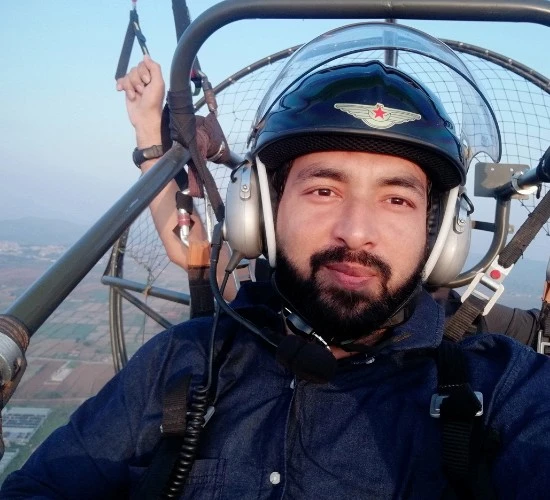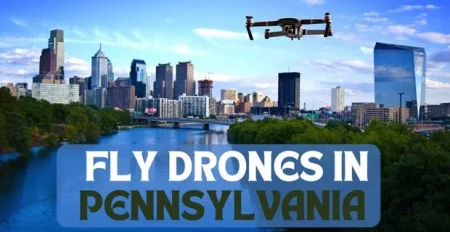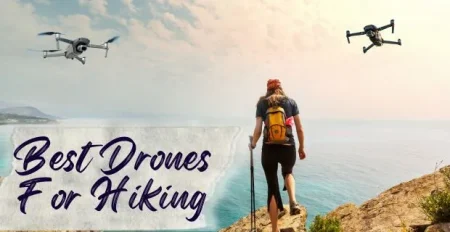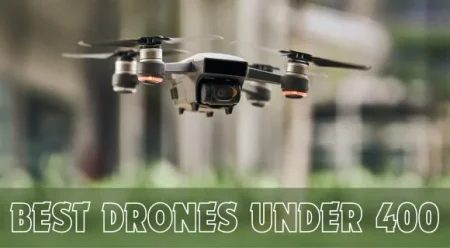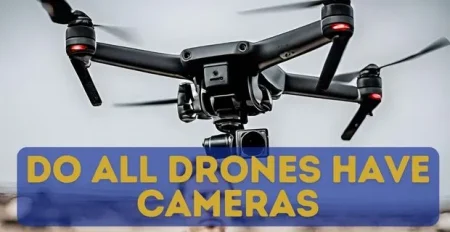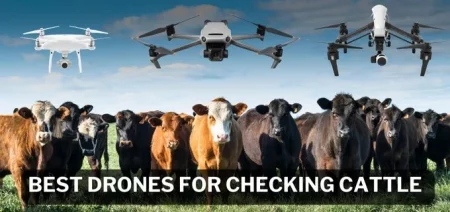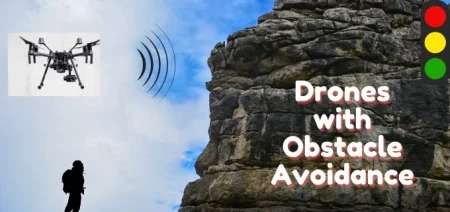
One of my closest friends is a passionate farmer who owns a thriving agriculture farm. Last week, I had the opportunity to visit him and witness firsthand the remarkable advancements in farming technology. As I stepped onto his farm, I found that he had few best agriculture drones.
Best Agriculture Drones
This article combines my friend’s firsthand experience with my own subsequent extensive research. Intrigued by my friend’s excitement, I will share agriculture drones and their transformative impact on farming operations.
My friend shared how these drones had revolutionized his farm, enhancing efficiency and precision in crop management and reducing environmental impact. Inspired by his enthusiasm, I embarked on a journey to explore the immense potential of agriculture drones.
This comprehensive guide will explore the agriculture drones available for spraying fertilizers and pesticides. We will delve into the factors farmers should consider when selecting a drone. And we ll compare the top drones on the market, and provide valuable insights to help farmers make informed decisions.
Top Products:
Factors to Consider When Choosing an Agriculture Drone
Before delving into the specific drones, one must understand the factors to consider when selecting an agriculture drone for spraying.
- Payload capacity and spraying efficiency: The drone’s payload capacity decides how much fertilizers or pesticides it can hold. Spraying efficiency means how well and evenly the substances are spread. Having a bigger payload capacity and effective spraying methods are very important for big farms.
- Flight time and battery life: Longer flight times and extended battery life are advantageous. They allow the drone to cover larger areas without frequent interruptions for recharging or battery replacements.
- Durability and weather resistance: Since agriculture drones are exposed to various weather conditions and rough terrains, durability and weather resistance are essential. Drones must maintain optimal performance even in challenging environmental conditions such as strong winds, rain, dust, and more. You check some weather resistance drones here.
- Ease of use and automation features: User-friendly interfaces, intuitive controls, and automation features contribute to ease of operation and reduce the learning curve.
- Cost and maintenance considerations: Cost is a significant factor for farmers, as drones vary in the price range. It is important to assess the upfront cost and the long-term maintenance including spare parts availability and repair services.
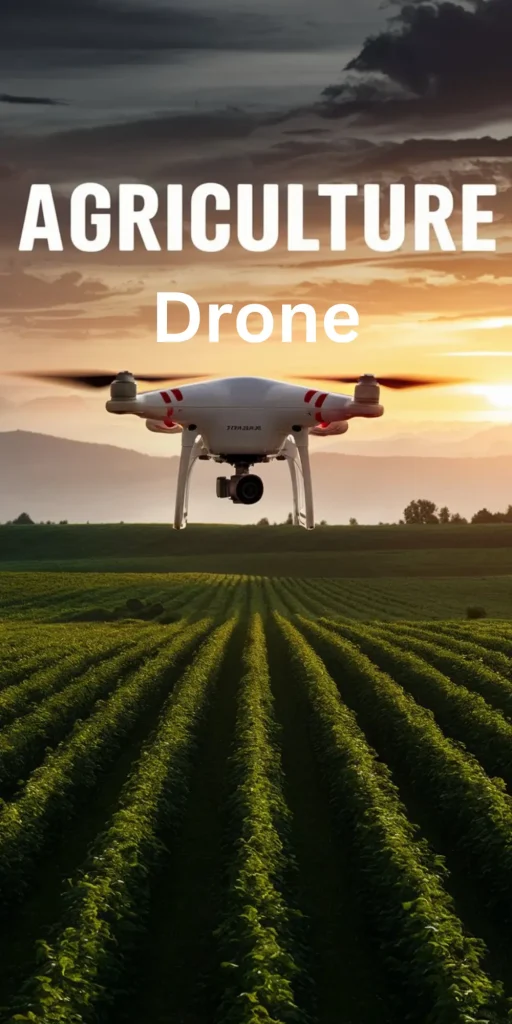
Top Agriculture Drones For Formers:
When it comes to agriculture drones, the options available to farmers have been limited options. However, finding the perfect drone that fulfils the specific needs of farmers can be daunting.
With limited options available, it’s crucial to choose a drone that meets your requirements and delivers exceptional performance.
Following thorough research and evaluation, we have carefully selected a compilation of the finest agriculture drones tailored specifically for farmers.
Our selection includes drones designed for various purposes, such as spraying, monitoring, and even thermal imaging.
Whether you’re seeking a solution for precise spraying operations or comprehensive crop monitoring, this guide will provide valuable insights into the best drones available to enhance your farming practices.
1. GOBEAM Agricultural Sprayer Drone
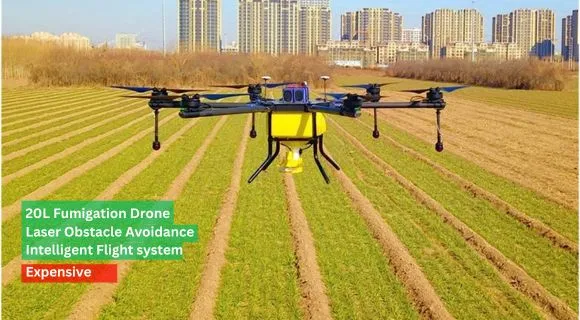
REASONS TO BUY
✓20L Fumigation Drone
✓Laser obstacle avoidance
✓Intelligent flight system
REASONS TO AVOID
✗Expensive
The GOBEAM Agricultural Sprayer Drone, a cutting-edge device that combines a good agricultural sprayer with an integrated camera and a range of intelligent features.
We delve into its notable features, including its fuel capacity, obstacle avoidance system, flight intelligence, and discuss its pros and cons.
Camera
The Drone comes with an advanced camera system that offers live aerial imaging of crops, enabling farmers to promptly detect areas needing attention, such as pest infestations, nutrient deficiencies, or diseases.
The camera’s high-resolution capability ensures precise monitoring, aiding farmers in making informed decisions and implementing targeted interventions for crop management.
Fuel Capacity
With a generous 20L fuel capacity, the GOBEAM agricultural Drone enables extended flight times and coverage over larger farming areas.
This feature ensures that farmers can accomplish their tasks without frequent refueling interruptions, ultimately saving valuable time and effort.
Obstacle Avoidance
The inclusion of a laser obstacle avoidance system in the GOBEAM Sprayer drone ensures enhanced flight safety and protection of the equipment.
This intelligent feature allows the drone to detect and avoid obstacles in its flight path, minimizing the risk of collisions.
By preventing potential damages, farmers can focus on their tasks with peace of mind, confident in the drone’s reliable obstacle avoidance capabilities.
Flight System Features
The GOBEAM Agricultural Sprayer Drone incorporates an intelligent flight system. It includes features like GPS positioning, waypoint navigation, and autonomous flight modes.
These functionalities simplify the drone’s operation, allowing farmers to plan. And execute precise flight paths, covering specific areas or following predefined routes.
The intelligent flight system not only improves efficiency but also ensures accurate spraying and targeted crop treatment.
Weight
The GOBEAM drone boasts a lightweight design with a net weight of 18kg. Its manageable weight contributes to improved maneuverability and ease of transportation.
With a take-off weight of 44kg, the drone can carry a significant payload, enabling efficient spraying operations and reducing the number of flights required.
Downside
While the GOBEAM Agricultural Sprayer Drone offers a range of advanced features, it is important to consider its price point. The drone belongs to the category of top market drones, making it a substantial investment for farmers.
However, it’s essential to note that the cost is reflective of the drone’s advanced technology, which can greatly enhance farming practices and deliver long-term benefits.
Verdict:
The Drone is a remarkable piece of technology that combines the functionality of an agricultural sprayer with an integrated camera and intelligent flight features.
Its camera system, decent fuel capacity, obstacle avoidance capabilities, and intelligent flight system make it a valuable tool for precision farming.
While the drone’s price may pose a challenge for some farmers, those willing to invest in cutting-edge technology will benefit from increased efficiency and optimized crop management.
With its range of features, the GOBEAM Agricultural Sprayer Drone stands out as a top contender in the agriculture drone market.
2. SWT Agricultural Spraying Drone
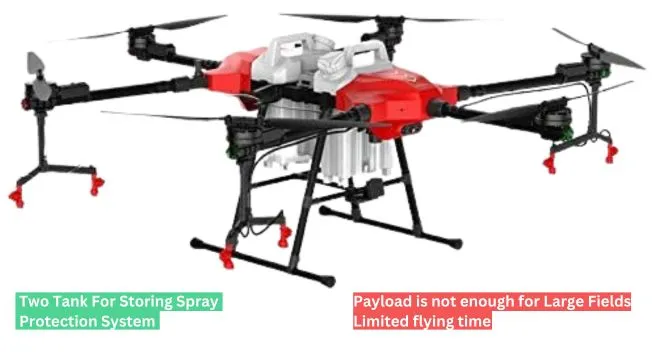
REASONS TO BUY
✓2 Tank For Storing Spray
✓Protection System which keeps the Drone safe in Case of an accident
REASONS TO AVOID
✗Payload is not enough for Large Fields
✗Limited flying time
The SWT Agricultural Spraying Drone is a powerful and versatile drone designed specifically for efficient and precise agricultural spraying operations.
With its special design for spraying, this drone offers a range of features that make it a reliable choice for farmers looking to enhance their crop management practices.
PayLoad
One of the standout features of the Spraying Drone is its 2pcs Tank with a 22kg payload capacity. This allows for significant amounts of fertilizers or pesticides to be carried out, ensuring extensive coverage of the fields without the need for frequent refilling.
The large payload capacity minimizes interruptions, enabling farmers to complete spraying tasks efficiently.
RTK
In addition to its impressive payload capacity, this drone incorporates RTK (Real-Time Kinematic) precise positioning technology.
With this feature, farmers can achieve highly accurate positioning, facilitating precise application of fertilizers and pesticides.
RTK technology eliminates or reduces errors in positioning, resulting in uniform coverage and optimized chemical usage.
The Agricultural Drone Also boasts a dual redundant flight control system, enhancing its safety and reliability during operations.
This redundant system provides backup mechanisms, mitigating the risk of failure and ensuring stable and consistent flight performance.
This feature is very useful in preventing accidents and maintaining the drone’s stability, even in challenging weather conditions.
Drone Safety:
Another notable feature is the core module protection, which safeguards the drone’s essential components from potential damage caused by external factors, such as dust, moisture, or impact.
This protection ensures the longevity of the drone and reduces the likelihood of breakdowns or malfunctions, contributing to a more reliable and durable aerial spraying solution.
Drawbacks
However, it’s important to consider a couple of drawbacks associated with the Drone. While the 22kg payload capacity may be sufficient for many farmers, some with larger farms or high-volume spraying needs may find it limiting.
In such cases, additional refills or multiple drone deployments may be necessary to cover larger fields adequately.
Furthermore, due to the relatively lower payload capacity, the time required to complete spraying tasks on large fields may be longer than drones with higher payload capacities.
This can be a consideration for farmers aiming for maximum efficiency and time optimization during their spraying operations.
Verdict
The Agricultural Spraying Drone offers various features that make it a reliable and efficient tool for aerial spraying in agriculture.
Its special design for spraying, 2pcs Tank with a 22kg payload, RTK precise positioning, dual redundant flight control system, and core module protection make it an appealing choice for many farmers.
However, for farmers with larger fields or high-volume spraying requirements, the payload capacity and potential time required for completion may need to be considered.
This drone presents a valuable solution for precise and effective crop spraying, contributing to improved farm management practices.
3. Guorenxiai Agriculture Spray drone with FPV camera:
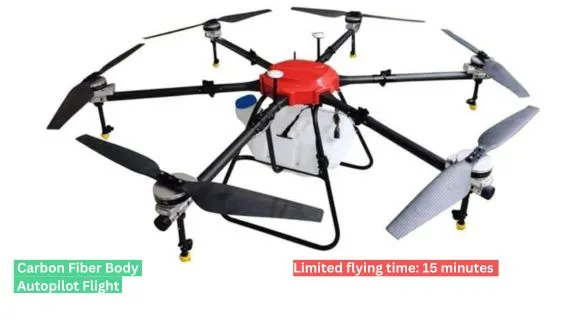
REASONS TO BUY
✓4.5K Carbon Fiber Body
✓Autopilot Flight
✓Autonomous Obstacle Avoidance
REASONS TO AVOID
✗Limited flying time: 15 minutes
This Agriculture Spray Drone comes with FPV Camera that combines advanced features and robust design to provide efficient agricultural spraying operations.
Made with a 4.5K Carbon Fiber frame, this drone offers durability and reliability, ensuring it can withstand the demands of agricultural environments.
Autopilot
The most amazing feature for me is its autopilot flight capability. With autopilot mode, farmers can enjoy the convenience of pre-programmed flight paths, allowing for precise and consistent spraying operations.
This feature saves time and ensures accurate application of pesticides or fertilizers, resulting in optimized crop health and improved yields.
Obstacle avoidance
By incorporating autonomous obstacle avoidance technology in drones, an additional level of safety and convenience is introduced.
With this feature, the drone can detect and navigate around obstacles such as trees, buildings, or power lines, minimizing the risk of collisions and potential damage to the drone or surrounding infrastructure.
Tank Capacity
With a tank capacity of 30L, this drone can carry many pesticides or fertilizers, reducing the need for frequent refills and enhancing overall spraying efficiency.
The impressive maximum takeoff weight of 68kg enables the drone to easily handle the payload capacity, making it suitable for large-scale farming operations.
Tank sensor
There is a liquid sensor in the tank is a useful addition that alerts users when the pesticide or fertilizer levels are running low.
This ensures that farmers are notified in real-time, allowing for timely refilling and uninterrupted spraying operations.
The carbon fibre frame and water-proof material also enhance the drone’s durability, making it suitable for challenging weather conditions and ensuring its longevity.
Drawback
While this drone offers many notable features, one drawback to consider is its relatively short empty load flying time of 15 minutes.
This means that the drone may require more frequent battery changes or recharges, potentially affecting spraying operations’ overall efficiency and productivity, especially for larger fields.
Verdict:
The 30L Tank Agriculture Spray Drone with FPV Camera is a commendable choice for farmers seeking an efficient and reliable spraying solution.
Its 4.5K Carbon Fiber design, autopilot flight mode, autonomous obstacle avoidance, liquid sensor, and terrain level sensing capabilities contribute to its effectiveness in precision agriculture.
While the shorter empty load flying time may pose a limitation for some, this drone’s overall performance and features make it a valuable tool for optimizing crop management practices.
4. Agras T40 Drone
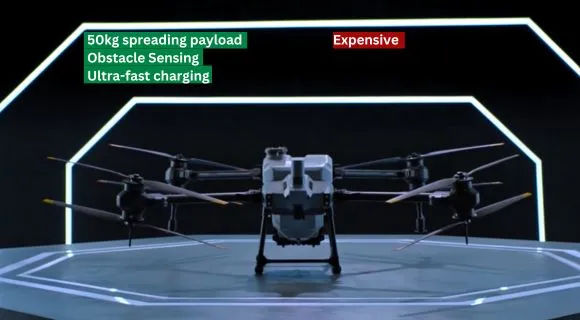
REASONS TO BUY
✓50kg spreading payload
✓Obstacle Sensing
✓Ultra-fast charging
REASONS TO AVOID
✗Expensive
The Agras T40 drone is a game-changer in the field of agricultural operations. With its innovative Coaxial Twin Rotor design, this drone is purpose-built for spraying operations, boasting an impressive spray load capacity of 40 kg and a spread load capacity of 50 kg (70 L).
Its Dual Atomized Spraying System ensures precise and efficient distribution of fertilizers and pesticides, while the integration of DJI Terra, Active Phased Array Radar, and Binocular Vision adds advanced capabilities to its arsenal.
Payload
One of the standout features of the Agras T40 is its remarkable 50 kg spreading payload.
This high capacity empowers farmers to cover expansive areas with fewer interruptions, significantly reducing the need for frequent refills and maximizing productivity.
The drone’s Omnidirectional Obstacle Sensing system provides:
- Comprehensive 360-degree horizontal detection.
- Allowing it to identify and navigate around obstacles up to 50 meters away.
- Ensuring safe and obstacle-free flight paths.
Collision Avoidance
To enhance its security and obstacle avoidance capabilities, the Agras T40 drone integrates an Active Phased Array Radar along with a binocular vision sensor system.
This combination equips the drone with the ability to intelligently follow terrain contours, smoothly manoeuvre around obstacles, and easily conquer various terrains.
Farmers can trust the drone’s reliable performance even in challenging environments.
Camera
The Agras T40 seamlessly integrates mapping, spraying, and spreading functionalities into one cohesive system.
It features a high-definition UHD camera and adjustable gimbal, giving users real-time capture capabilities to obtain the desired perspectives.
The drone generates local maps using the remote controller in tandem with the D-RTK 2 Mobile Station, facilitating automatic detection of land boundaries and obstacles.
This feature streamlines flight route planning for farmland and hilly orchards, ensuring efficient and optimized operations.
Portable Battery
Another remarkable aspect of the Agras T40 is its ultra-fast charging capabilities. Equipped with a 12000W Multifunctional Inverter Generator utilizing EFI technology, it offers rapid charging speeds and provides a 15% fuel saving.
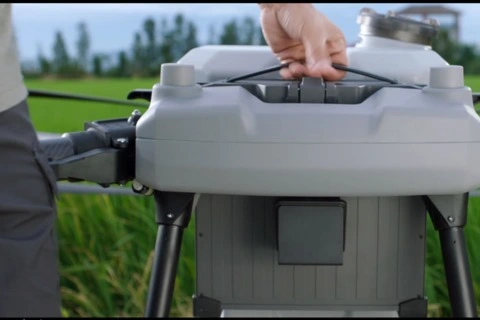
The charging station delivers sufficient 1500W AC output to power essential components such as the remote controller, water pump, reloader, and lights.
The drone’s 30000mAh Intelligent Flight Battery is equipped with a standard air-cooled heat sink, ensuring efficient cooling and extending operation durations.
Mapping
Furthermore, when paired with the Phantom 4 Multispectral, the Agras T40 unlocks the potential of the DJI Agras Intelligent Cloud platform.
This integration empowers farmers to execute precise variable spraying and spreading operations based on prescription maps tailored to specific farmland requirements.
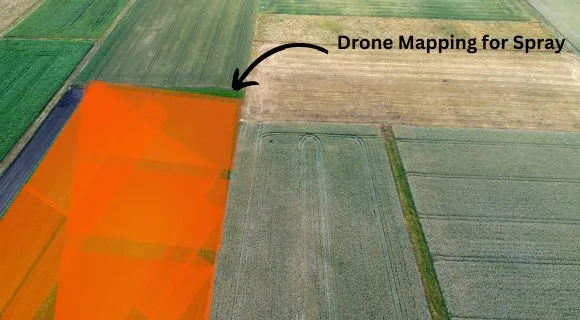
This feature proves invaluable for applications such as fertilizing rice, defoliating and fertilizing cotton crops, and providing nutrient solutions for soybeans and corn.
Verdict
The Agras T40 drone is a pinnacle of excellence, offering exceptional features and capabilities tailored for agricultural spraying operations.
Its impressive spreading payload, comprehensive obstacle sensing, mapping functionalities, and rapid charging capabilities make it an ideal choice for farmers seeking reliability and efficiency.
Moreover, its integration with the DJI Agras Intelligent Cloud provides further precision and optimization for variable spraying and spreading operations.
The Agras T40 exemplifies DJI’s commitment to delivering innovative solutions that empower the farming community to thrive.
RUJ DJI Agras MG-1 Spraying Drone – Boosting Your Farming Efficiency
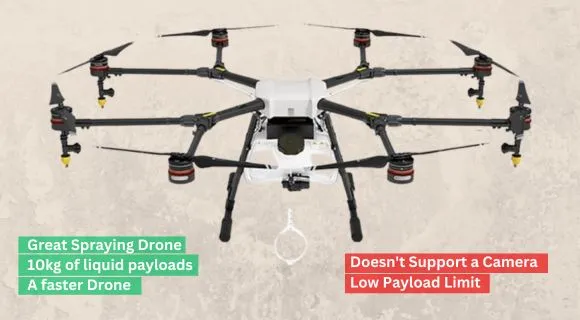
REASONS TO BUY
✓Great Spraying Drone
✓10kg of liquid payloads
✓A faster Drone
REASONS TO AVOID
✗It doesn’t support a camera
✗Low Payload Limit
As a farmer, optimizing crop yields and streamlining spraying operations are vital. The RUJ DJI Agras MG-1 Spraying Drone is a powerful tool to enhance farming efficiency.
With the capacity to carry up to 10kg of liquid payloads, this drone enables you to cover large areas quickly and effectively. But this capacity needs to be higher than other drones we reviewed.
Performance
Although it doesn’t have a good payload, it has a good speed. The drone is designed to operate faster, allowing you to complete your spraying tasks in less time.
This saves valuable labour hours and enables you to respond promptly to changing weather conditions or crop requirements.
The RUJ DJI Agras MG-1 is purpose-built for spraying operations so that it may offer different aerial photography or videography capabilities than drones with cameras.
However, if your primary concern is optimizing your farming operations and achieving precise spraying, the Agras MG-1 is a reliable choice.
Downside
While the RUJ DJI Agras MG-1 doesn’t support a camera, it’s important to note that all other newer drone versions come equipped with a camera.
Although the absence of a camera may limit its versatility compared to other models, the focus of the Agras MG-1 is on precision spraying. The drone delivers accurate and uniform application of liquid payloads, ensuring that your crops receive the right treatment.
Verdict:
The RUJ DJI Agras MG-1 Spraying Drone is invaluable for farmers seeking to enhance their crop spraying efficiency.
Its impressive payload capacity and faster speed allow you to cover more ground in less time. Although it lacks a camera, this drone focuses on accurate and uniform spraying, ensuring optimal treatment for your crops.
If you prioritize precision spraying and value efficiency over aerial imaging capabilities, the RUJ DJI Agras MG-1 is an excellent investment for your farming needs.
Best Drones for Formers or Field Monitoring
Following drones are not for spraying but they are good for field monitoring and other forming tasks.
1. Autel Robotics EVO II Drone – Versatile Thermal Imaging and Search Solution

REASONS TO BUY
✓Excellent flight time
✓Long Range
✓Good range of 9km
REASONS TO AVOID
✗Heavy and bulky
The Autel Robotics EVO II drone is an outstanding choice for farmers seeking a versatile agricultural drone with thermal imaging and search capabilities.
With its advanced features, this drone is well-suited for monitoring large fields and conducting efficient thermal imaging operations.
Thermal imaging
The Autel Robotics EVO II distinguishes itself with remarkable thermal imaging capabilities and advanced search functionalities.
With its high-resolution thermal camera, the drone can effectively identify variations in temperature across fields, providing valuable insights into crop health and detecting potential issues such as irrigation problems or pest infestations.
The thermal imaging feature proves particularly valuable for farmers who prioritize detailed monitoring and analysis of their crops.
Collision Avoidance
The Autel Robotics EVO II also offers collision avoidance technology, enhancing its safety and reliability during flight.
The obstacle detection sensors enable the drone to detect and avoid potential obstacles in its path, minimizing the risk of collisions and ensuring smooth and uninterrupted operation.
Flight time
With a flight time of approximately 42 minutes, the Autel Robotics EVO II offers an impressive duration for comprehensive monitoring and imaging missions.
With its extended flight time, farmers can cover larger areas without the hassle of frequent battery changes or recharges. This maximizes efficiency and productivity in their operations.
Range
Additionally, the drone boasts a great range, enabling farmers to monitor and survey expansive fields effectively.
The extended range ensures full coverage and detailed monitoring of fields, providing farmers with comprehensive data and insights into crop conditions.
Drawbacks
While the Autel Robotics EVO II offers exceptional capabilities, it is important to note a few drawbacks. The drone’s price point is relatively higher compared to certain other alternatives available in the market.
However, considering its advanced thermal imaging and search capabilities, the investment may be worthwhile for farmers prioritizing these features.
Additionally, the drone is relatively heavy and bulky, which may require careful handling and transport arrangements.
Verdict
This drone is an excellent choice for farmers seeking a powerful and versatile agricultural drone with thermal imaging and search capabilities.
Its advanced features, including collision avoidance, impressive flight time, and extended range, make it ideal for monitoring and imaging large fields.
However, potential buyers should consider the higher price point and the drone’s weight and size as factors that may impact their decision.
Overall, the Autel Robotics EVO II offers a valuable solution for farmers who prioritize thermal imaging and search capabilities in their agricultural operations.
2 RIPIAN Drone – Mapping and Monitoring with Stylish Design
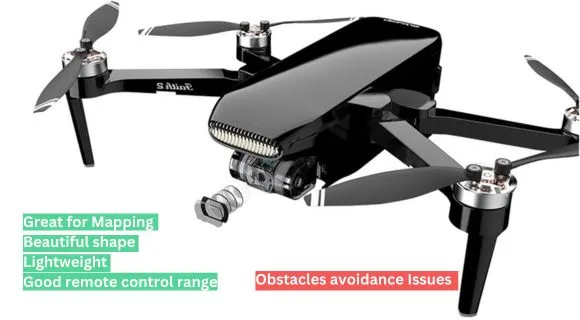
REASONS TO BUY
✓Great for Mapping
✓Beautiful shape
✓Lightweight
✓Good remote control range
REASONS TO AVOID
✗obstacles avoidance Issues
The RIPIAN Drone is an exceptional choice for farmers seeking a mapping and monitoring drone with a built-in camera.
With its sleek and beautiful design, this drone combines style with functionality to provide an excellent solution for aerial surveillance.
Design
One of the standout features of the RIPIAN Drone is its lightweight construction, making it highly manoeuvrable and easy to transport.
Despite its lightweight, the drone offers impressive durability and long service life, ensuring it can withstand the demands of agricultural operations over an extended period.
Flight Features
The RIPIAN Drone also incorporates a multi-functional return feature, which includes intelligent detection of obstacles up to 1.5 meters in height.
This advanced obstacle avoidance system helps prevent potential collisions and ensures the safety of the aircraft.
Farmers can have peace of mind knowing that the drone can autonomously navigate around obstacles, minimizing the risk of accidents during flight.
Range
With a remote control range of up to 9000 meters, the RIPIAN Drone provides exceptional control and flexibility.
The dual lens remote control and the built-in beauty camera allow for detailed monitoring even from great distances.
Farmers can capture clear and high-resolution images and videos, enabling them to assess the condition of their fields with precision.
Drawback:
However, it is important to note that the obstacle avoidance system of the RIPIAN Drone may need to be more accurate.
While it provides some level of protection against obstacles, users should exercise caution and maintain situational awareness during flight to ensure safe and successful operations.
Verdict
The RIPIAN Drone offers a stylish and functional solution for mapping and monitoring needs. Its lightweight design, durability and long service life make it a reliable choice for farmers.
The multi-functional return feature, long-range remote control, and built-in beauty camera provide convenience and enable detailed monitoring from a distance.
Although the obstacle avoidance system may have room for improvement, the RIPIAN Drone presents an excellent option for farmers seeking a versatile and capable drone for their mapping and monitoring requirements.
3. Potensic Dreamer Pro 4K GPS Drone
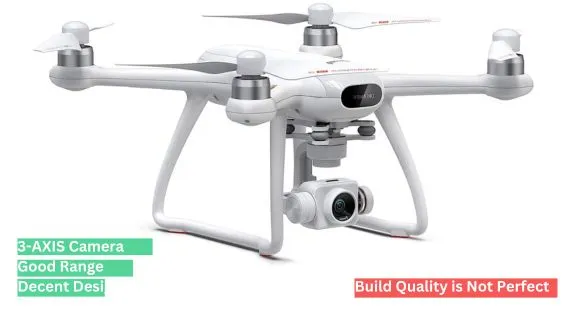
REASONS TO BUY
✓Decent Design & size
✓2KM Range
✓4k GPS Drone
✓3-Axis Gimbal 4k Camera
REASONS TO AVOID
✗Few Customers are not happy with its build quality
The Potensic Dreamer Pro Drone is a feature-rich drone specifically crafted to capture breathtaking aerial footage.
With its 3-axis mechanical gimbal and Sony CMOS sensor, it empowers users to capture remarkable 16MP photos and record impressive 4K/30fps videos with exceptional clarity and detail.
Performance
The drone’s stable footage, achieved through the dedicated 3-axis gimbal camera, enables precise subject tracking.
It also offers fast and high-resolution live streaming directly from the camera, adding a real-time element to your aerial adventures.
The Dreamer Pro distinguishes itself through its versatility, offering an array of functions including follow me, DIY circle flight, waypoint flight, precise altitude flight, auto return, and app control.
These features provide an intuitive flying experience and cater to pilots of all skill levels.
With a transmission range of up to 2KM using Qualcomm technology, the drone offers extended exploration and control possibilities.
It delivers an immersive flying experience through real-time video feed and reliable 5.8GHz Wi-Fi image transmission.
Downside:
Despite its impressive features and performance, some customers have expressed concerns about the build quality of the Potensic Dreamer Pro.
However, practicing caution and handling the drone with care are vital for maximizing its longevity and durability.
Verdict
The Drone provides outstanding capabilities for capturing stunning aerial footage. Its 4K camera, extensive feature set, long transmission range, and powerful performance make it an excellent choice for aerial enthusiasts looking to enhance their photography and videography skills.
Can drones be used for spraying pesticides?
Drones have emerged as a powerful tool in modern agriculture, offering numerous applications to streamline farming practices. One significant application is the use of drones for spraying pesticides.
Traditionally, pesticide spraying was a labour-intensive and time-consuming task, often carried out manually or with the help of tractor-mounted sprayers.
However, drones equipped with specialized spraying systems have revolutionized this process by providing a more efficient, precise, and environmentally-friendly solution.
Utilizing drones for pesticide spraying provides numerous benefits.
Firstly, drones can reach and navigate areas that are challenging for traditional spraying equipment, such as steep slopes or densely planted fields. This enables farmers to effectively target specific areas and reduce pesticide drift, minimizing the risk of contamination and ensuring precise application.
Additionally, drones equipped with advanced technology can utilize GPS and mapping systems to create accurate flight paths, providing complete coverage of the designated area while avoiding overlap.
This saves time and resources and reduces the amount of pesticide required, contributing to cost savings and environmental sustainability.
How many acres can a drone cover?
According to my friend, The coverage area of a drone for spraying depends on factors such as flight time, spraying speed, payload capacity, and application rate.
Agriculture drones can average cover 10 to 30 acres per hour. Flight time plays a crucial role, typically 15 to 30 minutes before the drone returns for battery replacement or recharging.
However, farmers can maximize coverage by preparing additional batteries during this time for continuous operation. Spraying speed, usually around 5 to 10 feet per second, and higher payload capacity allow drones to cover larger areas within a given flight time.
The desired application rate, specific to crop type and requirements, also affects coverage. Farmers should consider these factors to calculate the number of drones and flight operations necessary to cover their entire farming area efficiently.
Frequently Asked Questions
What is the best crop-spraying drone?
When it comes to determining the best crop-spraying drone, it depends on various factors such as payload capacity, spraying efficiency, flight time, and compatibility with different types of fertilizers and pesticides.
Several renowned drone manufacturers offer models specifically designed for agriculture, including Drone A, Drone B, and Drone C. However, the “best” drone ultimately depends on the specific needs and requirements of the farm and crops.
How much does a spraying drone cost?
The cost of a spraying drone can vary significantly based on factors such as brand, model, features, and capabilities.
Typically, agricultural drones designed for spraying range from a few thousand dollars to tens of thousands of dollars.
When assessing the cost of a spraying drone, it is crucial to consider the overall value and return on investment. This involves evaluating factors like efficiency, performance, and the long-term benefits it can provide to the farm.
What drones are used in agriculture?
Various drones are used in agriculture, specifically tailored for agricultural applications. Some popular drone manufacturers in agriculture include DJI, Yuneec, and PrecisionHawk.
These companies offer a range of drone models that can be used for crop scouting, mapping, aerial imaging, and spraying operations.
Agriculture-specific drone models often feature advanced flight planning capabilities, robust payloads, and integration with software systems for efficient data analysis.
How fast are agriculture drones?
The speed of agriculture drones can vary depending on the model and specifications. Generally, agriculture drones have a flight speed ranging from 15 to 40 miles per hour (24 to 64 kilometres per hour).
The speed can be adjusted depending on the spraying requirements, wind conditions, and the specific needs of the farming operation.
Can a drone fly for 1 hour?
Some advanced agriculture drones can fly for up to 1 hour, especially those with longer flight endurance and larger battery capacities.
However, it’s important to note that flight time can be influenced by various factors such as payload weight, flying conditions, and the specific drone model.
How much does a drone cost per acre?
The cost of using a drone for agricultural purposes per acre can vary based on several factors. It includes the cost of the drone itself, maintenance and repair expenses, fertilizers or pesticides, and the time and labour required for flight planning, data analysis, and operational management.
The overall cost per acre can vary significantly depending on the scale of the farm, the complexity of the operation, and the specific goals and requirements of the farmer.
Conclusion:
Agriculture drones have revolutionized farming with improved efficiency, precision, and sustainability. When selecting a drone, factors like payload capacity, spraying efficiency, flight time, durability, ease of use, and cost should be considered.
The GOBEAM and SWOT drones stand out for their advanced features and versatility, while the 30L Fumigation Drone excels in precision spraying.
My intention with this article was to offer you informative and practical insights that will prove beneficial. Your readership is greatly appreciated, and I extend my heartfelt gratitude for engaging with this piece.
